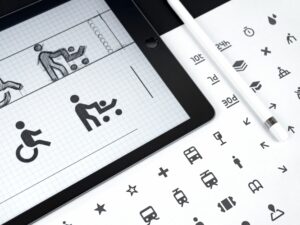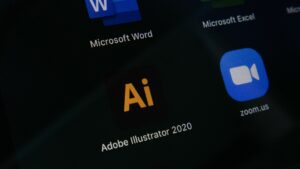In recent times, websites are focusing more on enhancing the experiences of their mobile users. Today, smartphones and the internet have become more accessible than ever before. Most of the potential customers are mobile users. It, therefore, makes sense for business organizations to move towards better mobile experiences while designing their websites.
There was a time when websites used to have lengthy content to describe the products and services of the business. Now, they are using iconography to present their products and services in a better way. When using iconography in website design, there are certain mistakes that must be avoided to create an excellent user experience. Here are some of them:
1. Using icons to just fill in the space
It is extremely important that the users understand the icons while browsing the website. Often, many businesses make the mistake of using icons just to fill in the gaps. As a result, the icons fail to serve a purpose and just appear like some random, unwanted stock photos.
This would obviously confuse the user. Today, icons must be treated more like a great ad copy on the websites. To make this happen, the focus must be on communicating the most important thing as quickly as possible. The information also needs to be presented with the help of icons in a way that’s easily digestible.
2. Excessive use of icons
Iconography must undoubtedly be a part of the website’s design and branding strategy. This is especially true in case of responsive sites. However, the icons only support the design and copy. They are never the entire brand and design of the website in themselves.
It’s not necessary to have an icon for every single product or service that is being offered. Using an icon for each of the product or service offered by the business results in information overload. A few good icons for describing the major offerings of the business is what’s required.
3. Not accompanying icons with a good copy
Icons may not communicate all the required information by themselves. Often, they need a good copy to convey the intended message to the users. They must be treated more like signposts to catch the attention of users. Icons generally tell the website’s visitors what the accompanying copy is all about before they even read it.
No potential customer buys the product or service just by seeing the icons. A well-written copy is always required to describe the products and services to the users. So, it is quite obvious that a website needs to have a good combination of icons and copy.
5. Trying to complicate rather than simplifying
Designers need to be clever and the people giving them instructions must be clever as well. Problems arise when they try to be too clever and complicate things. Unfortunately, this happens quite often while incorporating iconography in the website designs.
The designers and the individuals supervising them often try to force users to understand the brand, product, or service. This is a serious mistake and must be avoided at all costs. Iconography is something that must be crystal clear all the time. Only then it serves the purpose for which it is being used.






